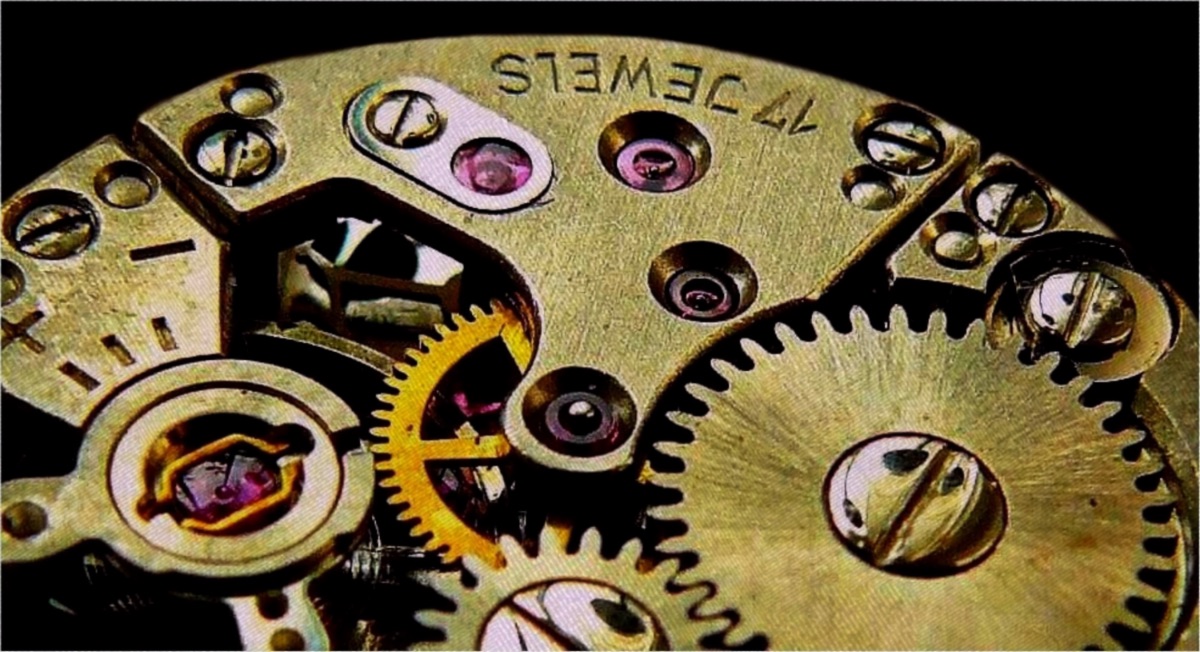shēngjī (shēng·jī life · {mechanism → [being organic]} → [life] 生机 生機)‐bóbó (bó·bó flourishing; thriving; vigorous · flourishing; thriving; vigorous 勃勃) 👈🏼 Tap/click to show/hide the “flashcard”
[Notes: Tap/click on a Pīnyīn (Pīn·yīn {Piecing Together of} · Sounds → [Pinyin] 拼音) expression to reveal its “flashcard”; tap/click on a “flashcard” or its Pīnyīn (Pīn·yīn {Piecing Together of} · Sounds → [Pinyin] 拼音) expression to hide the “flashcard”. 📖 📄 📘 icons mean 📖 Reveal All, 📄 Reveal Advanced, and 📘 Reveal None re all the “flashcards” in the heading, paragraph, etc. that they are placed at the beginning of.]
The Shēngmìng Láizì Chuàngzào Ma? ((Shēngmìng Life 生命) (Lái·zì Came · From 来自 來自) (Chuàng·zào Initiating · {Making, Creating} → [Creating] 创造 創造) (Ma [? ptcl for “yes/no” questions] 吗 嗎)? → [Was Life Created? (lc)]) (Was Life Created? (lc)) brochure and the Shēngmìng de Qǐyuán—Zhíde Sīkǎo de Wǔ Ge Wèntí ((Shēngmìng Life 生命) (de ’s 的) (Qǐ·yuán {Rising → [Starting]} · Source → [Origin] 起源/原)—(Zhí·de Worth · Getting → [Worth] 值得) (Sī·kǎo {Thinking About} · Examining 思考) (de ’s 的) (Wǔ Five 五) (Ge [mw] 个 個/个) (Wèn·tí Asking · Subjects → [Questions] 问题 問題) → [The Origin of Life—Five Questions Worth Asking (lf)]) (The Origin of Life—Five Questions Worth Asking (lf)) brochure were originally published back in 2010, but relatively recently, the English version of the Was Life Created? brochure was updated to the December 2022 Printing, and the Mandarin version of it was updated to the February 2023 Printing. Also, the Was Life Created? brochure and the Origin of Life brochure are now in the Teaching Toolbox section in the JW Library app. So, it would be good to consider some of the expressions used in the Mandarin versions of these publications that can be so helpful when discussing whether life was created.
“Living”
This week’s MEotW, which appears in the title of one of the sections of the Mandarin Was Life Created? brochure, is “shēngjī (shēng·jī life · {mechanism → [being organic]} → [life] 生机 生機)‐bóbó (bó·bó flourishing; thriving; vigorous · flourishing; thriving; vigorous 勃勃)”:
The Living Planet
Mandarin (WOL; Pīnyīn (Pīn·yīn {Piecing Together of} · Sounds → [Pinyin] 拼音) Plus)
📖 📄 📘 Shēngjī (Shēng·jī Life · {Mechanism → [Being Organic]} → [Life] 生机 生機)‐Bóbó (Bó·bó Flourishing · Flourishing 勃勃) de (’s 的) Dìqiú (Dì·qiú Earth · Globe 地球)
As can be seen from the above quotes, the Mandarin Was Life Created? brochure uses “shēngjī (shēng·jī life · {mechanism → [being organic]} → [life] 生机 生機)‐bóbó (bó·bó flourishing; thriving; vigorous · flourishing; thriving; vigorous 勃勃)” to effectively mean “living”. Considering the morphemes in it, this expression could also be translated as “brimming with life”, or something similar.
Mechanisms, Organisms, and Crises
The “jī ({machine; mechanism [→ [airplane; aircraft | being organic]]} | {incipient moment; crucial point} | chance; opportunity; occasion | intention; idea 机 機/机)” in “shēngjī (shēng·jī life · {mechanism → [being organic]} → [life] 生机 生機)‐bóbó (bó·bó flourishing; thriving; vigorous · flourishing; thriving; vigorous 勃勃)” is a particularly polysemous morpheme, meaning that it has many possible related meanings. For example, it can literally mean “mechanism”, and it can effectively mean “organic”. This seems to indicate that worldly Chinese culture recognizes that living things contain what are effectively mechanisms. Indeed, scientists (and Jehovah’s organization) speak of the molecular machines inside living cells.
A computer-animated visualization of how tiny molecular machines inside our cells copy DNA
The “jī ({machine; mechanism [→ [airplane; aircraft | being organic]]} | {incipient moment; crucial point} | chance; opportunity; occasion | intention; idea 机 機/机)” in “shēngjī (shēng·jī life · {mechanism → [being organic]} → [life] 生机 生機)‐bóbó (bó·bó flourishing; thriving; vigorous · flourishing; thriving; vigorous 勃勃)” also appears in the Mandarin expression for “crisis”, “wēijī (wēi·jī {ridge of a roof → [dangerous | endangering]} · {incipient moment; crucial point | occasion} | {(for) ridge of a roof → [(for) danger]} · occasion; opportunity → [crisis] 危机 危機)”, which some have misconstrued as meaning that there is positive opportunity in danger. For more information about that, check out the MEotW post discussing that expression.
Reduplications and Idioms
The latter half of “shēngjī (shēng·jī life · {mechanism → [being organic]} → [life] 生机 生機)‐bóbó (bó·bó flourishing; thriving; vigorous · flourishing; thriving; vigorous 勃勃)” is an example of reduplication, which is quite common in Mandarin. Another expression which features reduplication is past MEotW “rénxīn (rén·xīn people’s · hearts → [popular/public feeling] 人心)‐huánghuáng (huáng·huáng {being afraid; fearful; scared; frightened [→ [being anxious; uneasy; nervous]]} · {being afraid; fearful; scared; frightened [→ [being anxious; uneasy; nervous]]} 惶惶)”, which has a similar structure to that of “shēngjī (shēng·jī life · {mechanism → [being organic]} → [life] 生机 生機)‐bóbó (bó·bó flourishing; thriving; vigorous · flourishing; thriving; vigorous 勃勃)”.
Speaking of structure, the MEotW post on “rénxīn (rén·xīn people’s · hearts → [popular/public feeling] 人心)‐huánghuáng (huáng·huáng {being afraid; fearful; scared; frightened [→ [being anxious; uneasy; nervous]]} · {being afraid; fearful; scared; frightened [→ [being anxious; uneasy; nervous]]} 惶惶)” said the following about whether expressions like “rénxīn (rén·xīn people’s · hearts → [popular/public feeling] 人心)‐huánghuáng (huáng·huáng {being afraid; fearful; scared; frightened [→ [being anxious; uneasy; nervous]]} · {being afraid; fearful; scared; frightened [→ [being anxious; uneasy; nervous]]} 惶惶)” and “shēngjī (shēng·jī life · {mechanism → [being organic]} → [life] 生机 生機)‐bóbó (bó·bó flourishing; thriving; vigorous · flourishing; thriving; vigorous 勃勃)” qualify as chéngyǔ (chéng·yǔ {(things that) have become} · sayings → [set phrases (typically of 4 characters)] 成语 成語):
Considering its structure, we can say that “rénxīn (rén·xīn people’s · hearts → [popular/public feeling] 人心)‐huánghuáng (huáng·huáng {being afraid; fearful; scared; frightened [→ [being anxious; uneasy; nervous]]} · {being afraid; fearful; scared; frightened [→ [being anxious; uneasy; nervous]]} 惶惶)” is an idiom. However, it does not seem to be a chéngyǔ (chéng·yǔ {(sth. that) has become} · saying → [set phrase (typically of 4 characters); idiom] 成语 成語). This excerpt from the MEotW post on “chéngyǔ (chéng·yǔ {(sth. that) has become} · saying → [set phrase (typically of 4 characters); idiom] 成语 成語)” discusses the difference:
So, it appears that while chéngyǔ (chéng·yǔ {(things that) have become} · sayings → [set phrases (typically of 4 characters); idioms] 成语 成語) can be called idioms in English, not all Chinese idioms are chéngyǔ (chéng·yǔ {(things that) have become} · sayings → [set phrases (typically of 4 characters); idioms] 成语 成語). It seems that “chéngyǔ (chéng·yǔ {(things that) have become} · sayings → [set phrases (typically of 4 characters); idioms] 成语 成語)” specifically refers to Chinese idioms that originated in Classical Chinese, or Literary Chinese. This writing style has largely been replaced by written vernacular Chinese, which has been the standard style of writing for Modern Standard Mandarin for about a century now.
Since they originated in Classical Chinese, which hasn’t been current for about a century, chéngyǔ (chéng·yǔ {(things that) have become} · sayings → [set phrases (typically of 4 characters); idioms] 成语 成語) often cannot be fully understood by modern speakers and readers of Mandarin, since knowledge about the source material for chéngyǔ (chéng·yǔ {(things that) have become} · sayings → [set phrases (typically of 4 characters); idioms] 成语 成語) has naturally been fading with the passing of time.
Lots and Lots of Life
Whether or not “shēngjī (shēng·jī life · {mechanism → [being organic]} → [life] 生机 生機)‐bóbó (bó·bó flourishing; thriving; vigorous · flourishing; thriving; vigorous 勃勃)” is a chéngyǔ (chéng·yǔ {(sth. that) has become} · saying → [set phrase (typically of 4 characters); idiom] 成语 成語), it’s certainly appropriate for describing an earth that is well-suited for, and that is filled with, a huge variety of exquisitely designed living things. It is fitting that the Was Life Created? brochure quotes Psalm 104:24 in this regard:
How many your works are, O Jehovah!
You have made all of them in wisdom.
The earth is full of what you have made.
For convenience:
The direct link for the current-generation Pīnyīn (Pīn·yīn {Piecing Together of} · Sounds → [Pinyin] 拼音) Plus resource for the Was Life Created? brochure is:
The short link for Chinese field language-learning links for the Was Life Created? brochure is:
More Pīnyīn (Pīn·yīn {Piecing Together of} · Sounds → [Pinyin] 拼音) and Pīnyīn (Pīn·yīn {Piecing Together of} · Sounds → [Pinyin] 拼音) Plus web material based on the Mandarin Was Life Created? brochure will be made available in the Pīnyīn (Pīn·yīn {Piecing Together of} · Sounds → [Pinyin] 拼音) Plus web resource as time allows.

